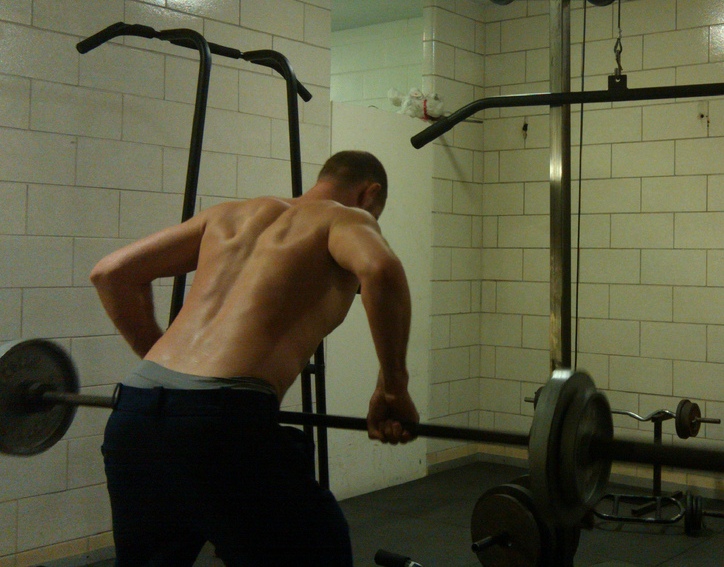The key to train and make progress is to see what works for you, use it and discard what doesn’t. The barbell row is a good example of e putting this advice into practice as the conventional way never worked with me.
How you do it
The conventional way of doing the bent-over barbell row is to grap a loaded barbell with a very wide grip, palms facing down. Then bend over deeply at the hips until your torso is parallel to the floor. Pull the bar up to your stomach while looking forward, keeping your back flat at all times. You will have to bend your knees to be able to bend so deeply and comfortably.
What I didn’t like
That didn’t work with me. I found the wide grip uncomfortable and lacked much strength in that position. The straight bar was also putting a lot of stress on my wrists. The deep bending position was too much for me and very tiring. I was ready to quit barbell rows until I read about how Dorian Yates did it. So I adapted the exercise to suit me.
How I do it
Now I bend at the hips just slightly, take a shoulder-width supinated grip of an EZ-bar and can pile up the weight. Am I doing it correctly? All I know is that I keep my back straight, feel no pain and my back is sore the next day, so that convinces me that despite bending just slightly, I am still targeting my back effectively. You’ll think that the upper traps will get involved but I never feel them; I probably bend over sufficiently far to involve the back more.
Why it works better for me
I wanted to develop my lats more and taking a narrow grip while keeping elbows close to the body allowed just that.
By bending over less, I am able to keep the bar very close to me and go very heavy.
By using a supinated grip, I involve the biceps less, so they don’t become the weakest link in the chain and get tired first. Again, that allows me to go heavier.
I use an EZ-bar because the supinated grip feels more comfortable on it. There is just too much rotational stress on my wrists when using a straight bar.
I don’t use straps for my wrists in any exercise because I don’t work out my forearm muscles separately. Any pulling exercise is therefore training for my forearms. If my body can’t grip it, there’s no point having muscles that can pull it!
So don’t be scared to try new exercises but don’t give up too soon if they don’t work. Try to adapt them to what feels right to you. If something works for someone, it doesn’t mean it’ll work for you too.

